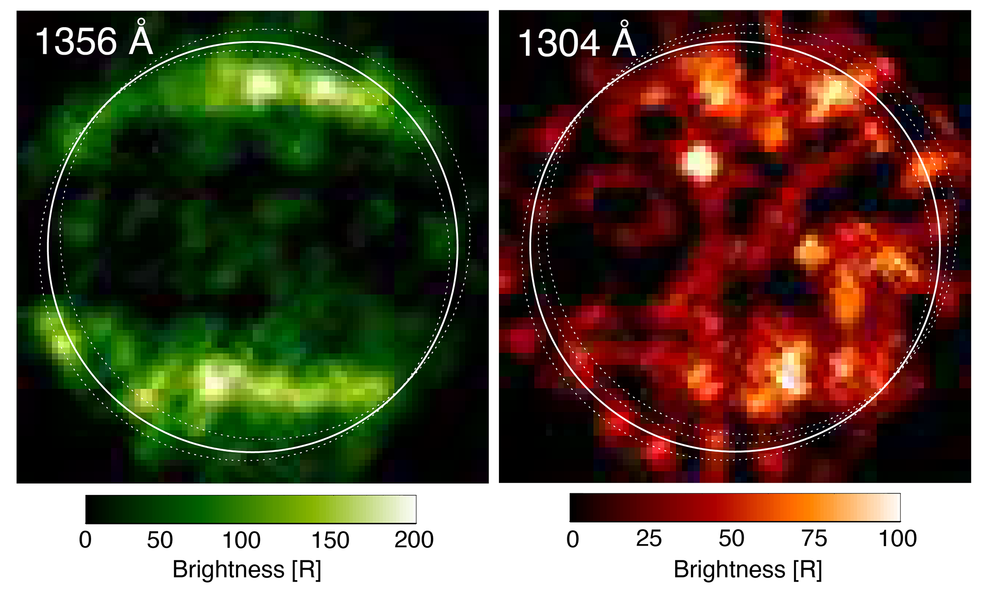
The National Aeronautics and Space Administration (NASA) has announced that it has found evidence of water vapor in the atmosphere of Jupiter’s moon Ganymede. As a result of analyzing data observed by NASA’s Hubble Space Telescope by a research group at the Royal Institute of Technology in Sweden, they found evidence of the existence of water molecules in Ganymede’s atmosphere.
Jupiter’s moon Ganymede started with Pioneer 10 observation in 1972, and various probes have been investigated since then. For example, in the Voyager Project, the Voyager Project revealed the exact size of Ganymede, and the Galileo probe missions from 1996 to 2000 discovered that it had its own magnetic field and that there was a large amount of water underground. Also, it has been known that the surface of Ganymede is covered with ice or that there is an atmosphere in the survey by the probe and the observation by the Hubble Space Telescope.

In 1998, the world’s first Ganymede ultraviolet image was taken using the Hubble Space Telescope imaging spectrometer. As a result of analyzing the ultraviolet image, it was thought that the difference between the two observations was caused by oxygen molecules contained in the atmosphere as a light pattern representing the Ganymede atmosphere. At this time, he recognized a light pattern different from that caused by oxygen molecules, but at the time, it was speculated that it was the effect of oxygen atoms contained in the atmosphere.
However, this time, a research team at the Royal Institute of Technology in Sweden took an ultraviolet spectrum taken with a spectrometer of the Hubble Space Telescope and compared it with previous data to find out how many oxygen atoms were contained in Ganymede’s atmosphere.
Therefore, to investigate why different light patterns are observed, the relative distribution of the aurora in Ganymede was analyzed in detail. As a result, it is said that the location where the different light patterns were measured had the same temperature that the ice covering the surface melted and sublimated. In other words, it was speculated that the atmosphere at the site contained water vapor sublimated by ice, so the light patterns representing atmospheric conditions were different.
Because atmospheric conditions affect observation instruments, this discovery is expected to be of great help to Ganymede exploration in the future. Ganymede, where air and water exist, is also an important place for space development. Jupiter ICy moonsExplorer (JUICE) also plans to conduct surface and subsurface observations. The probe is scheduled for launch in 2022 and is expected to reach Jupiter in 2029. Related information can be found here.


